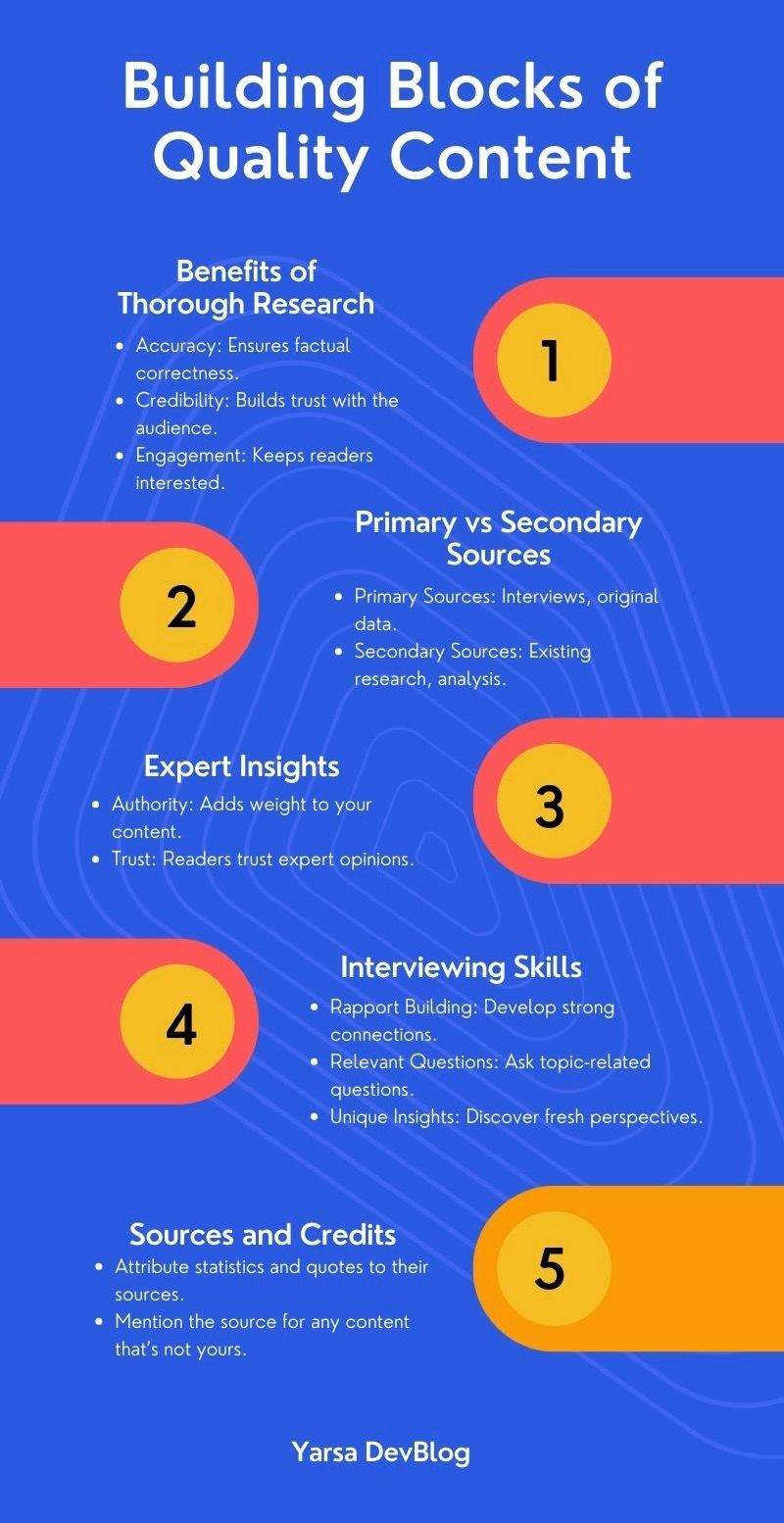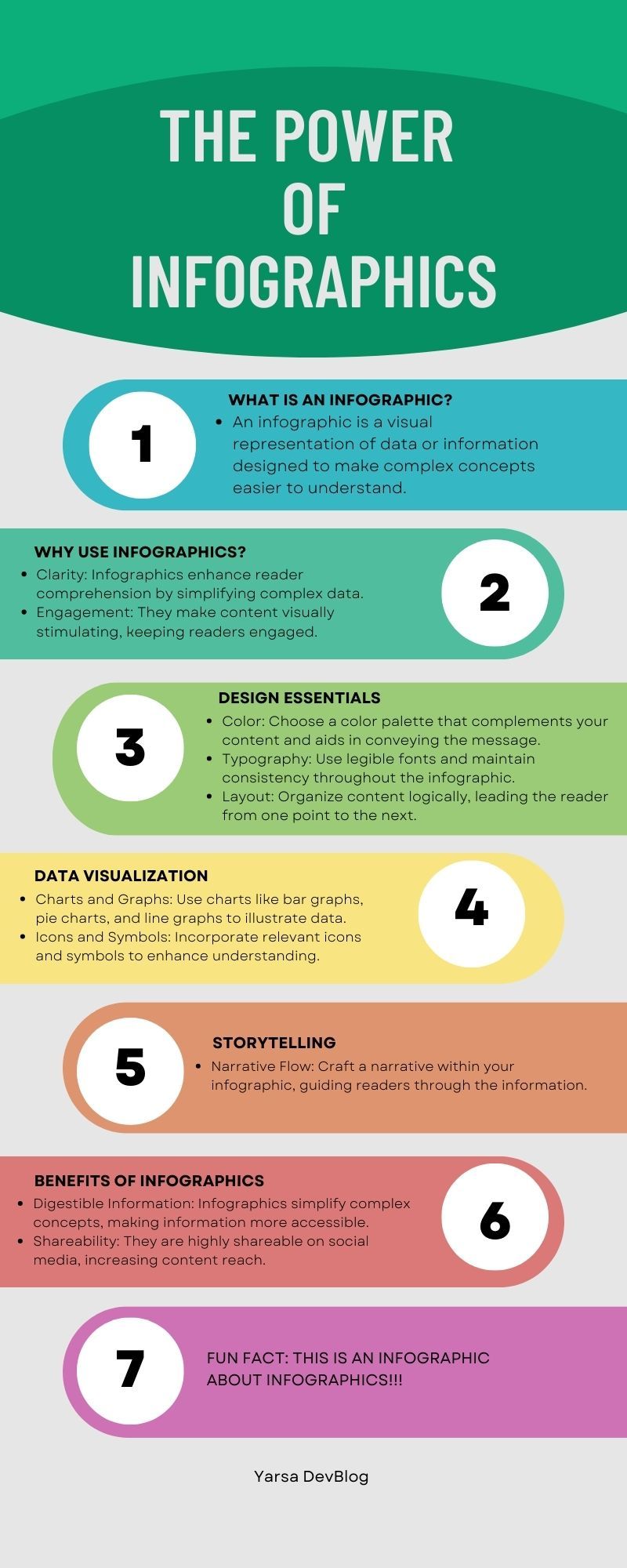Imagine yourself in a bustling marketplace, surrounded by vendors vying for your attention with flashy ads and sales pitches. Amidst the noise, one vendor stands out. Instead of offering cheap trinkets, they arrange their products as carefully crafted works of art, inviting you to explore a world of substance and meaning.
In the vast and loud space of the internet, long-form content is that standout vendor. It cuts through the noise with thorough research, in-depth analysis, and compelling storytelling. Like a coveted treasure tucked away in a sea of noise, it enchants readers, offering a gratifying and enriching experience for those searching for intellectual nourishment.
Long-form content refers to blogs, articles or other content that exceeds 1,000 words. These pieces delve deeper into a topic, often requiring significant research, time, and effort. In this article, we will explore the impact of long-form content, investigate reader psychology, and provide research techniques, writing style, and SEO strategies to produce impactful long-form content.
Discussions:
Long-Form vs. Short-Form Content
| Aspect | Long-Form Content | Short-Form Content |
|---|---|---|
| Length | Typically exceeds 1,000 words | Typically shorter, often under 1,000 words |
| Advantages | - High SEO potential due to comprehensive content - Greater value for readers - Enhanced authority and credibility - Encourages reader engagement and extended time on page |
- Quick to consume - Appeals to audiences with limited time - Easier to produce and share quickly |
| Disadvantages | - Requires more time and effort to create - May deter readers with limited time - Potentially overwhelming for some audiences |
- Limited depth of information - Less SEO potential - May not establish authority as effectively |
| Use Cases | - In-depth analysis - Thought leadership pieces - Comprehensive guides and tutorials |
- News updates - Social media posts - Quick informational content |
| Engagement | Often leads to more extended reader engagement and interaction | Suitable for capturing quick attention but may not maintain it for as long |
| SEO Impact | Has a higher potential to rank well in search engine results due to depth and relevance | May struggle to achieve high search engine rankings without exceptional optimization |
| Reader Loyalty | Can foster a dedicated readership due to the value and expertise demonstrated | May attract a broader audience but may not build the same level of loyalty |
| Thought Leadership | Effective for establishing thought leadership within a niche | May not provide sufficient space for demonstrating expertise and authority |
This table illustrates the key differences and trade-offs between long-form and short-form content, allowing you to choose the most suitable format based on your goals and target audience.
The Psychology Behind Reader Engagement
Cognitive factors play a significant role in readers' behaviour towards long-form content. These factors include the F-shaped reading pattern and emotional triggers, which can profoundly impact the retention of information.
According to the F-shaped reading pattern, readers tend to scan the first few lines of an article before focusing on the left-hand side of the page. Therefore, it is essential to prioritise the most critical information on the left-hand side to ensure that readers retain the article's central ideas. Emotional triggers such as humour, fear, surprise, and curiosity keep readers engaged throughout the article. By incorporating these emotional triggers strategically, long-form content can appeal to readers and increase their interest in the article.
Storytelling is another crucial aspect of long-form content. The science of storytelling suggests that people tend to remember and trust information delivered through stories. By weaving captivating narratives into blog posts, readers are more likely to connect emotionally with the article's core message, making it more relatable and memorable.
In-Depth Research Techniques for Long-Form Content
Conducting extensive research is a fundamental requirement for creating successful long-form content. This process allows writers to thoroughly understand the topic, providing valuable insights and unique perspectives to help engage readers.
To achieve this, primary and secondary sources become the building blocks of factual information in long-form content. Primary sources refer to firsthand accounts or original data, whereas secondary sources reference existing research and professional analysis. Utilising both sources ensures accuracy and credibility in the content produced, and reviewing their relevance and reliability is also vital.
Incorporating expert opinions and insights from industry insiders can add more authority and credibility to long-form content. Gathering exclusive information by conducting well-prepared interviews also sets the content apart. Essential interviewing skills include building rapport with experts, asking relevant and thought-provoking questions, and gathering unique and valuable insights that provide a clear perspective to the reader. These expert insights enhance the quality and depth of the content, making it more thought-provoking and useful.
By combining thorough research with careful fact-checking and including expert opinions, writers can produce well-written, long-form content that engages readers. This process demonstrates professional expertise, increases credibility, and provides readers with valuable information they can understand and remember.

Striking the Perfect Balance: Text and Visual Elements
Long-form content strikes a harmonious balance between text and visual elements. Strategic incorporation of visuals complements the text, enhancing readability and maintaining the reader's interest. The selection of images, infographics, and videos should align with the content's theme, ensuring readers remain engaged throughout the post.
To maintain a seamless flow, writers must strategically place visuals throughout the blog post, allowing readers to absorb information easily. Carefully integrating text and visuals creates an immersive reading experience that leaves a lasting impression.
Writing Style and Structure for Impactful Long-Form Content
Crafting impactful long-form content requires careful attention to writing style and structure. The introduction plays a crucial role, as it is the gateway to capturing readers' attention and encouraging them to explore further. By creating powerful opening paragraphs, writers can set the tone and generate curiosity, compelling readers to engage with the material.
To maintain a smooth flow throughout the blog post, seamless transitions between sections are essential. By guiding readers from one point to the next, writers ensure that the information is conveyed logically and coherently. This allows readers to follow the progression of ideas without confusion or disruption. It's important to avoid common pitfalls such as abrupt shifts in tone or excessive jargon, as these can detract from the reading experience and undermine the article's credibility.
In addition to transitions, utilising headings and subheadings helps organise the content and enhance readability. Clear and concise headings give readers an overview of what to expect within each section, allowing them to navigate the article easily and find the information they seek. These formatting techniques contribute to the overall structure of the long-form content, making it more accessible and engaging.
Furthermore, conversational writing can make the content more relatable and accessible to readers. Writing in a tone that resonates with the target audience helps build a connection and keeps readers engaged throughout the article. Incorporating storytelling elements like personal anecdotes or real-life examples can add depth and captivate readers.
Data Visualisation and Infographics – Presenting Complex Information
In-depth blog posts often involve presenting complex data and information. Visualising techniques can transform intricate data into visually appealing graphics that aid reader comprehension. Using appropriate colour, typography, and layout, writers can present information clearly and visually stimulatingly.
Integrating infographics within the blog post adds value and enhances reader engagement. When effectively designed, infographics are powerful storytelling tools, simplifying complex concepts and making the content more digestible.

SEO Strategies for Long-Form Content
Long-form content can provide a significant strategic advantage in search engine optimisation (SEO). Conducting thorough keyword research is essential to identify relevant long-tail keywords that align with the post's content. Including targeted keywords throughout the article is vital to signal relevance to search engines and increase the chances of ranking higher in search results.
On-page SEO tactics are also key to optimising long-form content for search engines. Optimising headings, subheadings, and meta descriptions with relevant and strategically placed keywords increases the article's visibility in search results. This is particularly important, as search engines rely heavily on these elements to identify the relevance and importance of the content.
Internal and external linking is another critical element of on-page SEO. Linking to authoritative sources within a post emphasises the credibility and relevance of the content and contributes to a seamless reading experience for the user. Additionally, external links from reputable sources also indicate the quality and value of the content, which can further improve its ranking in search results.
Moreover, optimising for user experience is equally important in long-form content. A clear and concise structure, authoritative sources, and engaging storytelling contribute to the material's readability, relevance, and overall value. Thus, ensuring high-quality, valuable, and engaging content increases the user's time on the site, ultimately improving organic search rankings.
Analysing Reader Interaction and User Behavior
Measuring the performance of long-form content requires leveraging analytics tools to gain insights into reader interaction and behaviour. Key metrics, such as reader engagement and time on the page, offer valuable feedback on the blog post's impact. By understanding audience behaviour through data analysis, writers can refine their content strategies and cater to readers' preferences.
To gain a deeper understanding of readers' perspectives, case studies on reader feedback and content improvement prove invaluable. By incorporating audience insights into future posts, writers can continuously enhance their long-form content and build lasting connections with their readership.
The Future of Long-Form Content and Its Role in Content Marketing
The future of long-form content in content marketing is promising as it continues to evolve and grow in importance. As readers increasingly seek substantial and meaningful content, long-form blog posts will play a prominent role in content marketing strategies.
Integrating long-form content into content marketing campaigns offers various benefits for brands. First and foremost, it allows brands to establish thought leadership within their industry. Long-form content allows one to delve deeply into a topic, showcase expertise, and offer unique insights that elevate the brand's credibility and authority.
Furthermore, long-form content enables brands to engage with their target audiences on a deeper level. By providing in-depth and comprehensive information, brands can address readers' questions, solve their problems, and meet their informational needs. This fosters a stronger connection between the brand and its audience, increasing trust and loyalty.
Long-form content also plays a crucial role in building a reputation for delivering valuable information. By consistently producing high-quality, informative, and insightful long-form content, brands can position themselves as a reliable source of valuable information. This reputation helps attract and retain a dedicated audience who values the brand's expertise and insights.
In addition, long-form content has the potential for increased visibility and reach. Search engines prioritise longer, more comprehensive content, and readers are likelier to share and engage with valuable long-form pieces. This can result in improved organic rankings, increased website traffic, and broader brand exposure.
While the content landscape may continue to evolve, long-form content will remain a vital component of content marketing strategies. Its ability to establish thought leadership, engage audiences at a deeper level, and build a reputation for delivering valuable information ensures its continued relevance in the future of content marketing.
Conclusion
Long-form content possesses immense potential as a valuable tool for bloggers and content marketers. By understanding the psychology of reader engagement, undertaking comprehensive research, and effectively incorporating visuals, writers can craft blog posts that are both compelling and authoritative. This combination allows the content to resonate deeply with readers, leaving a lasting imprint on their minds.
In an era of ever-expanding digital content with ever-decreasing attention spans, quality long-form blogging symbolises value and substance. Its ability to captivate and engage readers through thoughtful psychology, thorough research, effective visual elements, and immersive storytelling offers endless possibilities for bloggers and content marketers. By embracing the power and potential of long-form content, we can pave the way for a future where content truly makes a lasting impact on readers.
